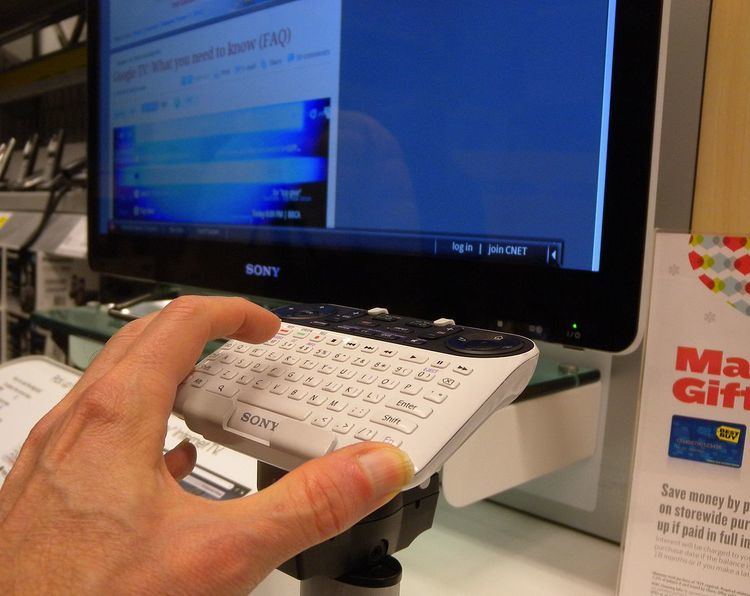Developer Google and others Marketing target Smart TV platform | OS family Android | |
 | ||
Working state Discontinued (Google TV's SDK was removed in June 2014) Source model Open source with proprietary components Initial release 6 October 2010; 6 years ago (2010-10-06) | ||
Google TV was a smart TV platform from Google co-developed by Intel, Sony, and Logitech that was launched in October 2010 with official devices initially made by Sony and Logitech. Google TV integrates the Android operating system and the Google Chrome web browser to create an interactive television overlay on top of existing online video sites to add a 10-foot user interface, for a smart TV experience.
Contents
Google TV's first generation devices were all based on x86 architecture processors and were created and commercialized by Sony and Logitech. The second generation of devices are all based on ARM architecture processors and with additional partners including LG, Samsung, Vizio and Hisense. In 2013, more second generation Google TV-supported devices were announced by new partners, including Hisense, Netgear, TCL, and Asus, some of which including 3D video support.
Google TV was succeeded in June 2014 by Android TV, a new platform which shares closer ties with the Android platform (in particular, Android 5.0) and has a revamped user experience integrating with Knowledge Graph, and providing casting support from mobile devices. While a "small subset" of Google TV devices will be upgraded to the Android TV platform, the majority will not. In June 2014, the Google TV SDK was pulled, ending any future software development for existing devices and effectively deprecating the platform.
Features
Google TV leveraged many of Google’s existing products. Google TV’s operating system, a customized version of Android, provided the underlying foundation, allowing developers to create applications that extended the system’s functionality. Google’s Chrome browser provided a gateway to the Internet, allowing consumers to browse web sites and watch television in tandem. Consumers could access HBO, CNBC, and content from other providers through the Chrome browser. Android and Apple smartphones and tablet computers could be used as remote controls for Google TV. Google TV products shipped with wireless remote controls with a full QWERTY keypad. An update in November 2011 allowed access to Google Play and enabled search to find content from live TV, Netflix, YouTube, HBO GO, Amazon, and more.
Apps
Xyologic has compiled a list of the early Google TV apps with the largest number of installations. As of November 2012, the most installed apps are Napster, Pandora Radio and CNBC.
Partners
The Google TV platform was provided by Google to OEMs for incorporation into their consumer products. The first generation of consumer devices were produced by Logitech and Sony. The second generation of consumer devices were produced by Sony, LG (see LG L9 SoC), Vizio, Hisense, NetGear and Asus. The third generation of consumer devices was announced by LG at 2013 International CES, with the announcement of their TV models.
Competitors and controversies
Cable providers as well as content providers have been slow to warm to Google TV. NBC, ABC, Fox, CBS and Hulu have blocked Google TV enabled devices from accessing their web content since Google TV's launch. As of November 22, 2010, Google TV devices are blocked from accessing any programs offered by Viacom’s subsidiaries. Of the cable and satellite providers, only Dish Network (formerly Echostar), had embraced Google TV and promoted it by offering customers a discount on the Logitech Revue.
In January 2014, Google filed a UDRP case against the owner of domain names androidtv.com and xbmcandroidtv.com. The domain names were owned Exo Level, Inc. and were registered with GoDaddy in November 2006. In March 2014, Google’s case was denied.
